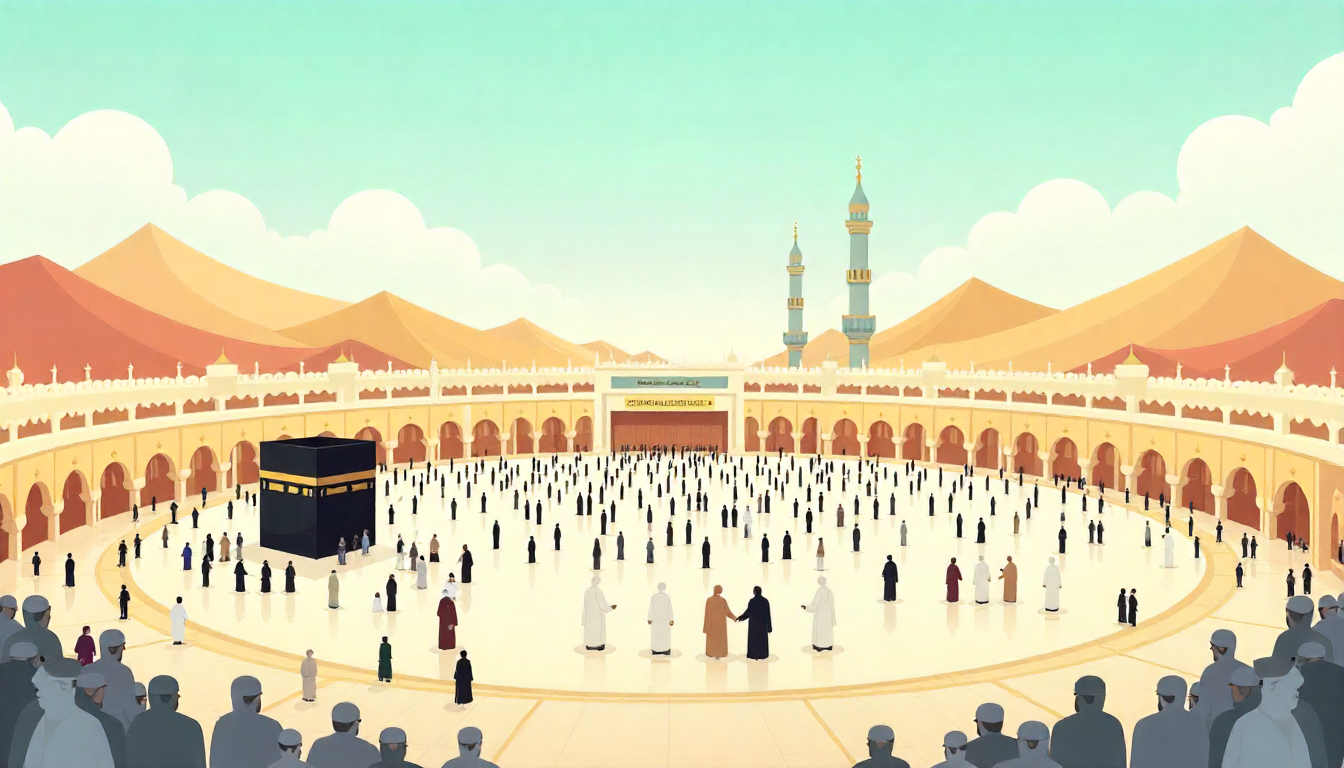Hajj is one of the five pillars of Islam and holds immense significance for Muslims worldwide. Every year, millions of Muslims from around the world gather in Mecca, Saudi Arabia, to undertake the sacred journey of Hajj. Hajj is a physical and spiritual journey that involves several rituals, each with deep spiritual meaning. It is a time for Muslims to purify their hearts, seek forgiveness from Allah, and reflect on their lives. While the rites of Hajj are incredibly significant, they can seem overwhelming, especially for first-time pilgrims.
This guide will break down the stages of Hajj, offering a visual timeline of the key rituals and explaining their meaning. Whether you are preparing to embark on this spiritual journey or seeking a deeper understanding of Hajj, this post will provide you with a clear overview of each ritual and its significance.
Ihram: The Beginning of the Sacred Journey
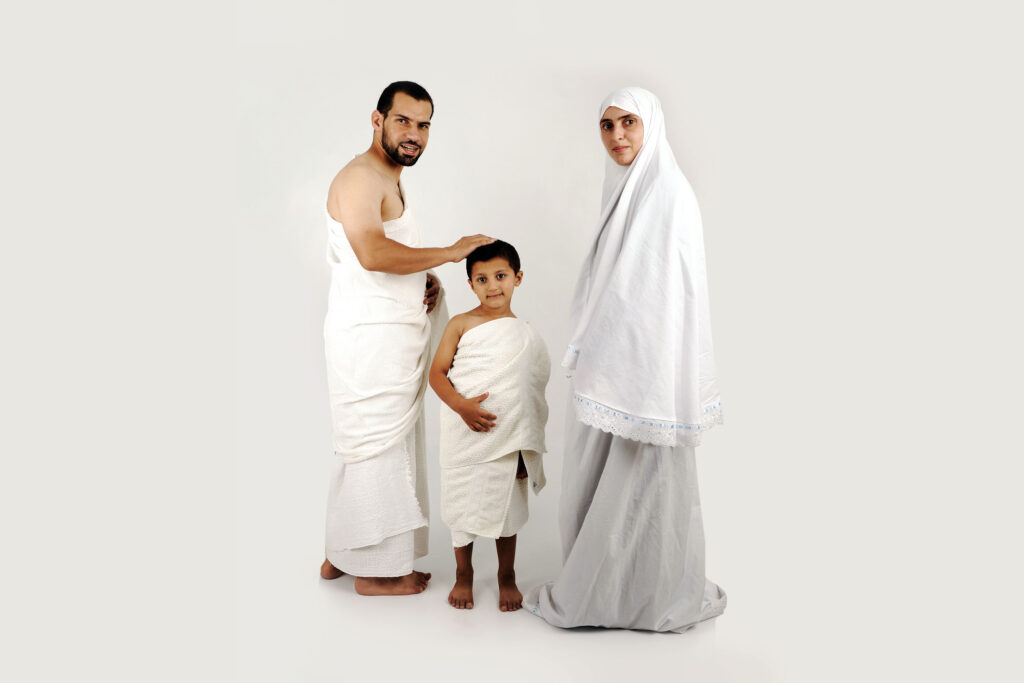
The first stage of Hajj begins with entering the state of Ihram. Ihram is not just a physical state but also a spiritual one. It signifies the beginning of the pilgrimage, where pilgrims prepare themselves mentally, physically, and spiritually for the journey ahead.
What Happens During Ihram?
Before entering Mecca, pilgrims must first enter the state of Ihram. Ihram is a state of purity, where certain actions are prohibited, and it is intended to remind the pilgrim of the seriousness of the pilgrimage. Men wear simple white garments—two unstitched pieces of cloth—while women wear modest clothing that covers their entire body. The simplicity of this dress symbolizes the equality of all Muslims, regardless of their wealth, status, or nationality.
Ihram is more than just wearing the special attire; it marks the pilgrim’s commitment to engaging in acts of worship with full devotion. Upon donning the Ihram clothes, pilgrims recite the Talbiyah, a prayer of submission to Allah. They declare, “Here I am, O Allah, at Your service.” This phrase is a reminder that they are leaving behind worldly matters to devote themselves completely to Allah. Pilgrims opting for Cheap Umrah Packages will also find that the Ihram process is the same, emphasizing that the spiritual journey is the same, regardless of the package chosen.
Restrictions in Ihram
During the state of Ihram, certain activities become prohibited. Pilgrims are not allowed to cut their hair or nails, wear perfume, engage in marital relations, or argue or fight with others. These restrictions are meant to focus the pilgrim’s attention solely on worship and to purify their soul from any distractions or worldly desires.
Entering the state of Ihram is an essential part of the pilgrimage, symbolizing the pilgrim’s complete submission to Allah and their readiness to begin the journey of spiritual renewal.
Tawaf al-Qudum: The First Circumambulation
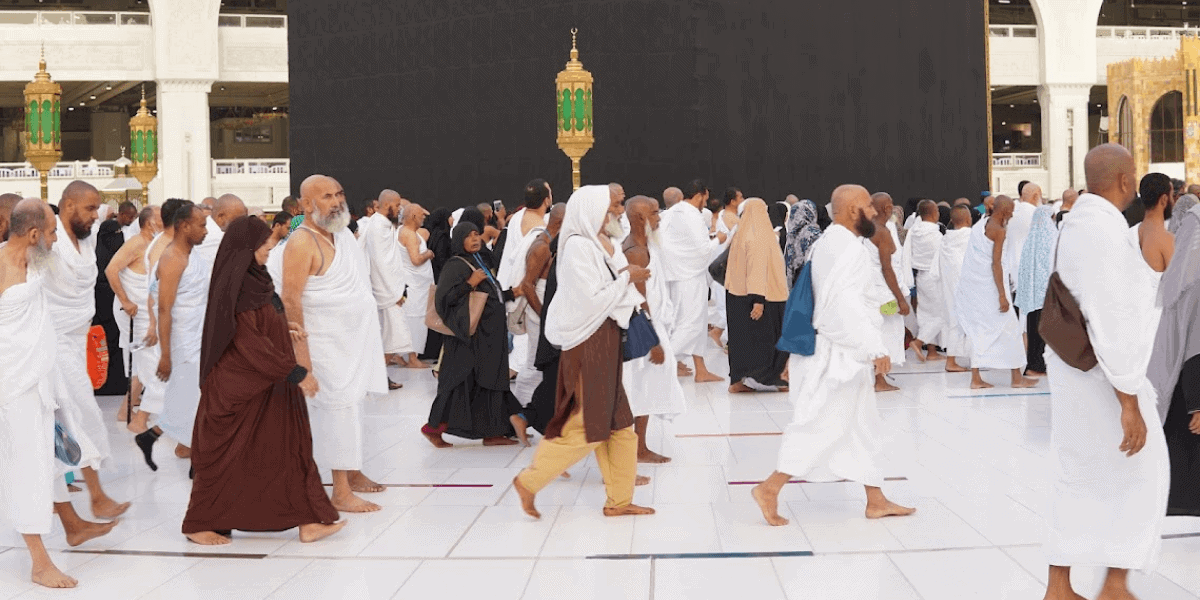
Once pilgrims arrive in Mecca, the first ritual they perform is the Tawaf al-Qudum. This involves walking seven times around the Kaaba in the Masjid al-Haram, starting from the Black Stone (Al-Hajar al-Aswad) and moving counterclockwise.
The Significance of Tawaf al-Qudum
Tawaf is one of the most important rituals in Hajj, and Tawaf al-Qudum marks the beginning of the physical part of the pilgrimage. By walking around the Kaaba, pilgrims physically demonstrate their obedience to Allah, expressing their complete submission to Him.
The act of Tawaf is symbolic of the unity of the Muslim Ummah, as all pilgrims, regardless of their background or nationality, perform the same ritual. The Kaaba, the most sacred site in Islam, serves as the focal point of worship, and the act of walking around it reinforces the notion that Allah is the center of the lives of all Muslims.
The pilgrims begin the Tawaf by facing the Black Stone and saying a prayer of devotion. During the Tawaf, pilgrims make Du’a (supplications) and ask for Allah’s forgiveness and blessings. This ritual is both physical and spiritual, marking the first major act of worship in Mecca and preparing the pilgrims for the next stages of their journey.
Sa’i: Walking Between Safa and Marwah
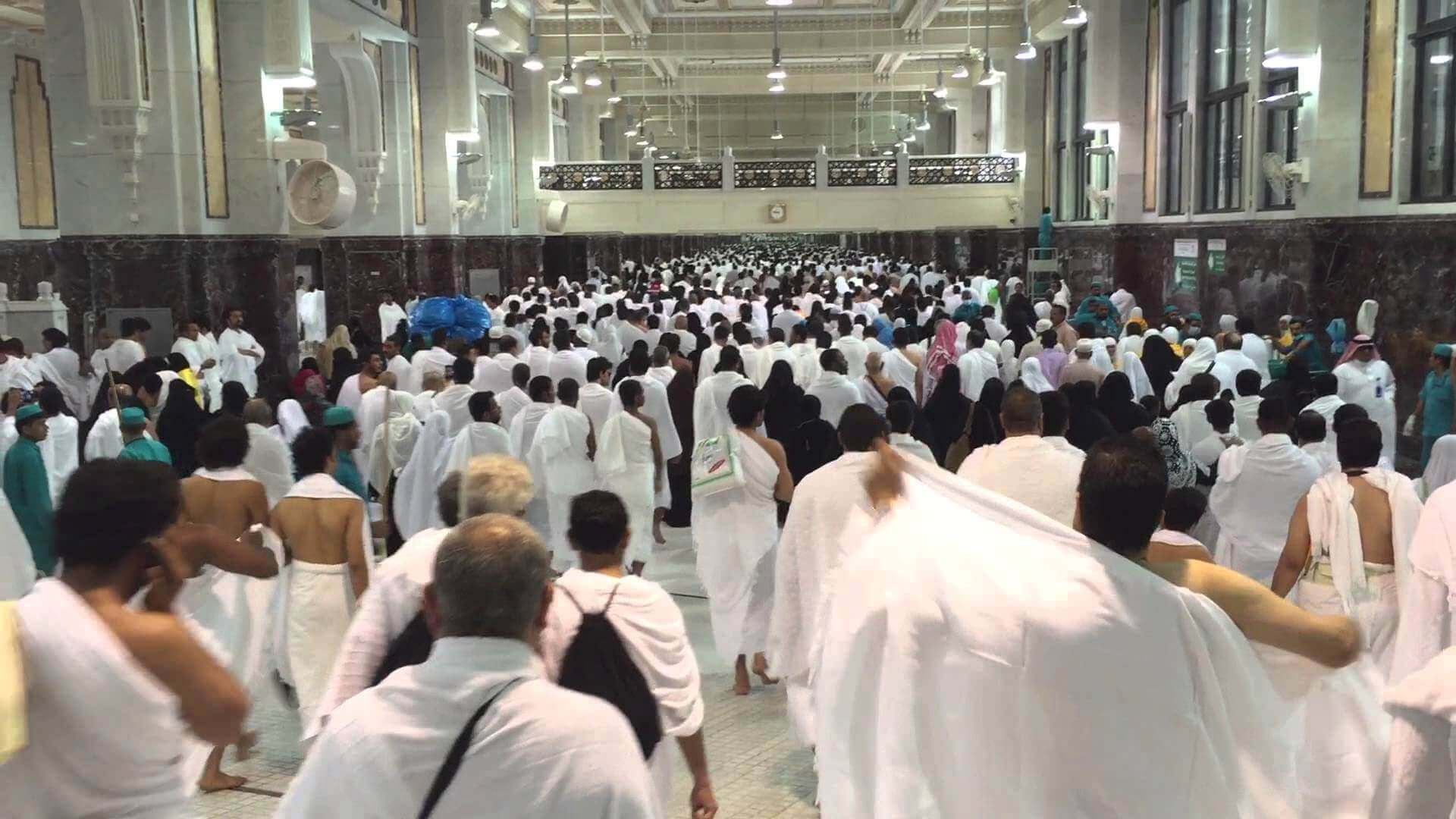
After completing the Tawaf, pilgrims proceed to perform Sa’i, which involves walking seven times between the hills of Safa and Marwah. This act commemorates the search for water by Hagar, the wife of Prophet Ibrahim, who ran between these two hills in search of water for her son, Isma’il.
The Importance of Sa’i
Sa’i is a significant ritual as it commemorates the immense struggle and perseverance of Hagar in her search for water. This act of running between Safa and Marwah symbolizes the test of faith and trust in Allah. As pilgrims walk between these two hills, they reflect on the struggles of Hagar and the mercy of Allah who provided her with water from the Zamzam well.
Sa’i is not just a physical act of walking; it is a moment for pilgrims to reflect on their own perseverance and faith in Allah. The ritual reminds pilgrims that, like Hagar, they too must rely on Allah’s mercy in times of difficulty.
The Spiritual Meaning of Sa’i
During Sa’i, pilgrims walk briskly between Safa and Marwah, often reciting prayers and reflecting on their own personal struggles. It is an opportunity for spiritual reflection and growth, reminding pilgrims that no matter how difficult life may be, they must remain patient and trust in Allah’s provision. Sa’i is also an opportunity to make Du’a for one’s self, family, and loved ones, seeking Allah’s blessings and mercy.
Standing at Arafat (Wuquf): The Climax of Hajj
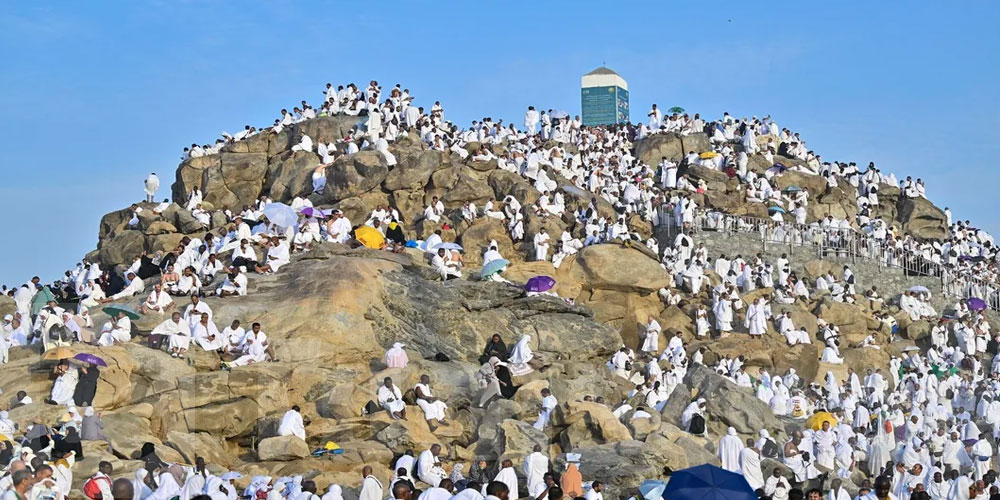
The most important day of Hajj is the 9th of Dhu al-Hijjah, when pilgrims gather at Arafat for Wuquf (standing). Wuquf is the most significant ritual of Hajj, and it is considered the climax of the pilgrimage.
The Importance of Arafat
The Day of Arafat is considered the day of forgiveness. The Prophet Muhammad (PBUH) is reported to have said, “Hajj is Arafat,” indicating that standing at Arafat is the most crucial part of Hajj. Pilgrims gather in Arafat to pray, reflect, and ask for forgiveness. It is a day of spiritual renewal and a time for pilgrims to seek Allah’s mercy and forgiveness for their sins.
On this day, pilgrims stand in the open plain of Arafat, facing the qibla, and engage in prayer and supplication. Arafat is also a reminder of the Day of Judgment, when all of humanity will stand before Allah.
The Spiritual Significance of Arafat
Standing at Arafat is a deeply spiritual experience. Pilgrims make supplications, ask for forgiveness, and reflect on their lives. This is a time when Allah’s mercy is abundantly showered upon His servants. It is said that on this day, Allah forgives the sins of those who sincerely repent and seek His mercy.
Wuquf is the heart of Hajj, where pilgrims feel the closeness of Allah and experience a deep sense of spirituality. The gathering of Muslims from all around the world on this day symbolizes the unity of the global Muslim Ummah.
Muzdalifah: Collecting Pebbles
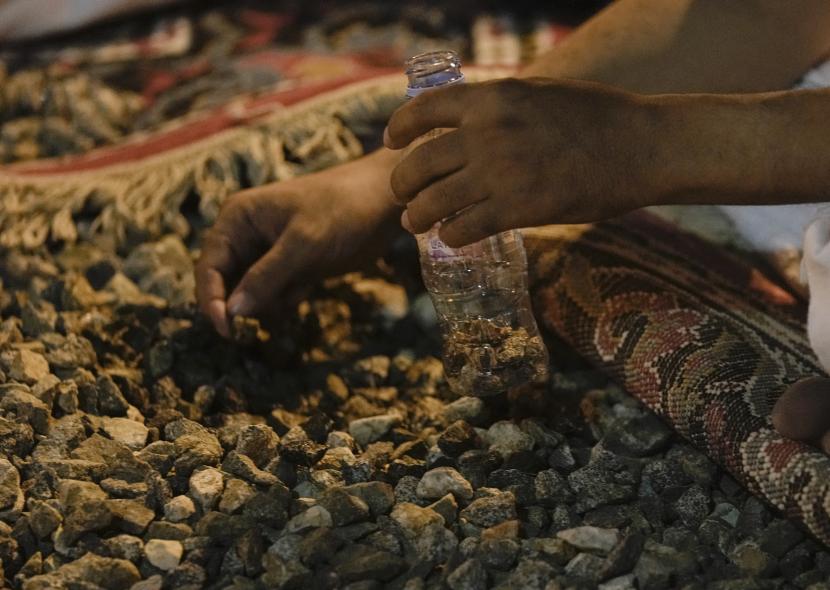
After leaving Arafat, pilgrims head to Muzdalifah, where they spend the night under the open sky. It is in Muzdalifah that pilgrims collect pebbles for the next ritual, the Ramy al-Jamarat, or the stoning of the devil.
The Role of Muzdalifah
Spending the night in Muzdalifah is a time for reflection, rest, and preparation for the final stages of Hajj. Pilgrims gather pebbles and engage in additional prayers before proceeding to the next stage of the pilgrimage.
Muzdalifah is a time of simplicity and humility, where pilgrims sleep under the stars and are reminded of the humble nature of their existence before Allah. It is also a time of quiet contemplation, where pilgrims can reflect on their journey and prepare for the challenges that lie ahead.
Spiritual Lessons from Muzdalifah
The simplicity of the night spent in Muzdalifah reminds pilgrims that they are equal before Allah, regardless of their social status. The open sky and simple surroundings emphasize the fleeting nature of material wealth, encouraging pilgrims to focus on their spiritual journey.
Ramy al-Jamarat: Stoning of the Devil
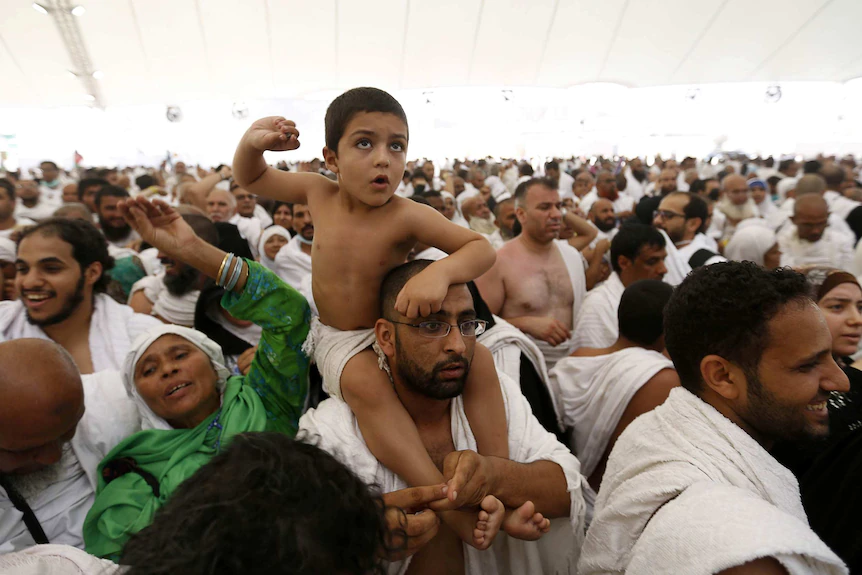
After leaving Muzdalifah, pilgrims proceed to Mina, where they perform Ramy al-Jamarat, the stoning of the devil. This ritual commemorates the story of Prophet Ibrahim, who was tempted by Satan to disobey Allah’s command to sacrifice his son. To resist the temptation, Ibrahim threw stones at Satan.
The Significance of Stoning the Devil
Ramy al-Jamarat represents the rejection of evil and disobedience. Pilgrims throw seven pebbles at each of the three stone pillars, symbolizing their rejection of Satan’s influence and their commitment to follow Allah’s commands.
The ritual is a powerful act of defiance against evil and a reaffirmation of faith in Allah. It symbolizes the pilgrim’s resolve to avoid the temptations of Satan and remain steadfast in their devotion to Allah.
Eid al-Adha Sacrifice: Symbolizing Obedience to Allah
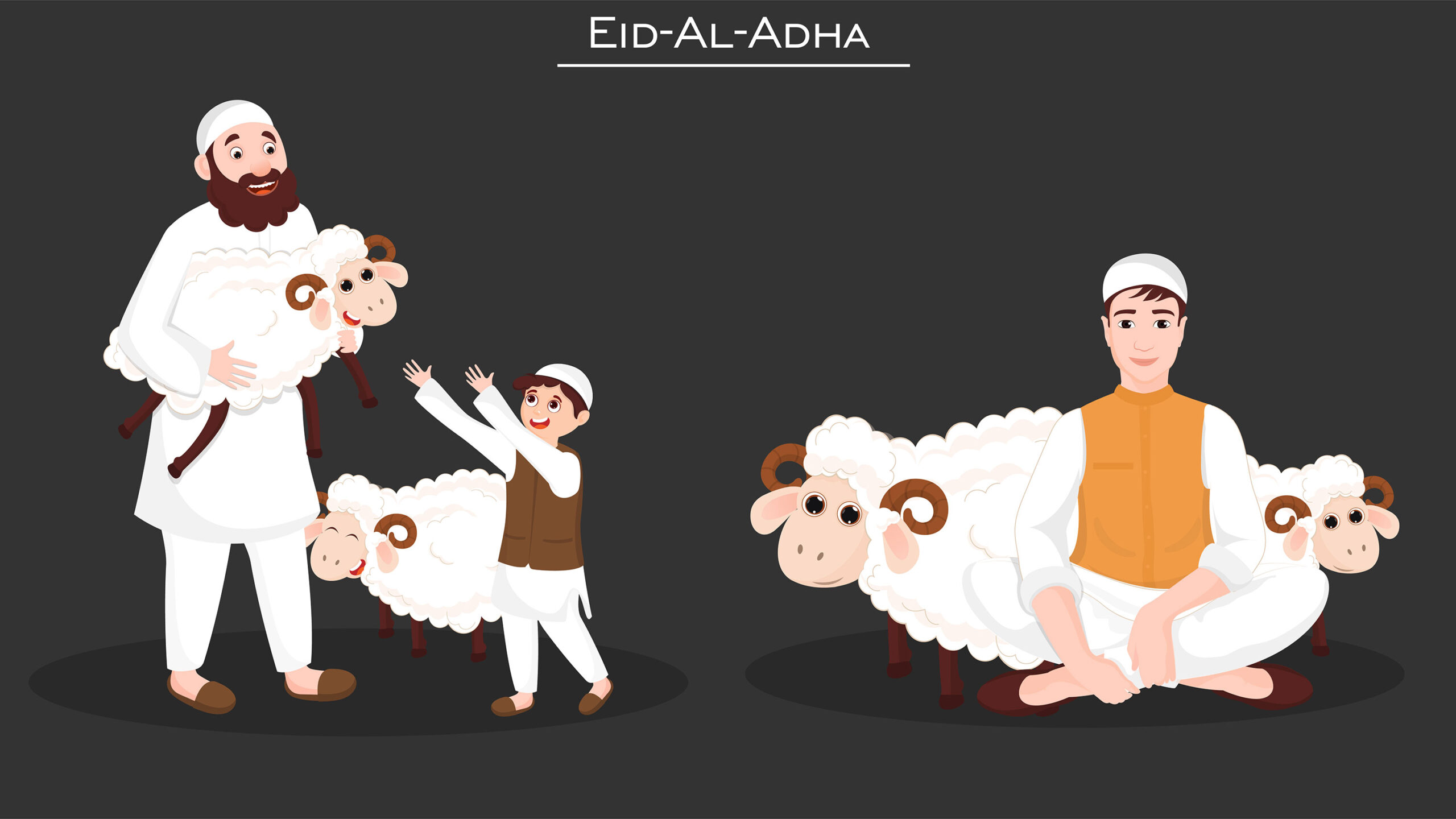
On the 10th of Dhu al-Hijjah, pilgrims perform the Eid al-Adha sacrifice, or Qurbani. This ritual commemorates the willingness of Prophet Ibrahim to sacrifice his son Isma’il in obedience to Allah’s command.
Why the Sacrifice is Performed
The sacrifice represents submission to Allah’s will. By performing the sacrifice, pilgrims follow in the footsteps of Prophet Ibrahim, who showed unwavering obedience to Allah’s command. The meat from the sacrifice is distributed among the poor, ensuring that those in need can partake in the blessings of Eid al-Adha.
The sacrifice is not only a demonstration of obedience but also a reminder of the importance of charity and social responsibility. Pilgrims share the meat with those less fortunate, promoting unity and compassion within the community. For those booking through an Umrah Travel Agency UK, this act of charity and giving is often included as part of the package, ensuring that the pilgrims fulfill their obligation to give back to the less fortunate during this sacred journey.
Tawaf al-Ifadah: The Second Circumambulation
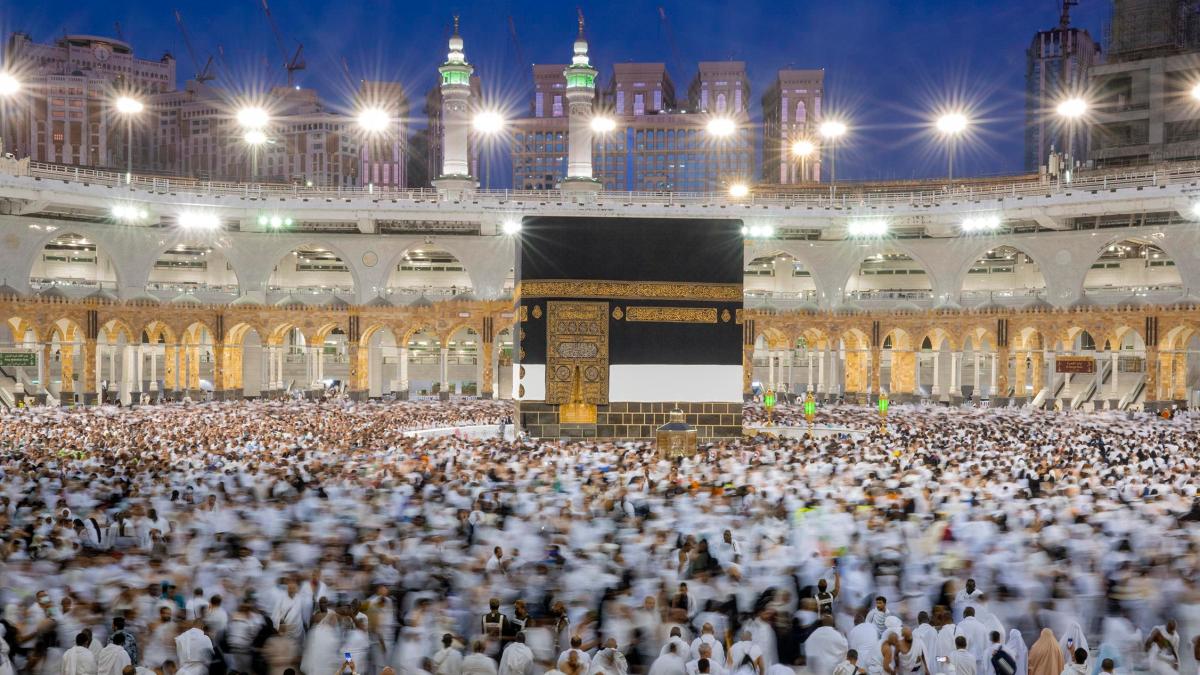
After completing the stoning and sacrifice, pilgrims return to Mecca for Tawaf al-Ifadah, the second circumambulation of the Kaaba. This is a major ritual of Hajj and marks the pilgrim’s return to the Kaaba after completing the key rites of the pilgrimage.
The Importance of Tawaf al-Ifadah
Tawaf al-Ifadah is a symbol of the pilgrim’s gratitude for completing the central acts of Hajj. It represents the pilgrim’s renewed spiritual state after having performed the primary rituals of Hajj. It is also a reaffirmation of one’s submission to Allah and a gesture of thankfulness for His mercy and blessings.
This Tawaf is a key moment in the pilgrimage, marking the completion of the essential acts and bringing the pilgrim closer to Allah.
Shaving or Trimming Hair: Symbolizing a Fresh Start

After Tawaf al-Ifadah, male pilgrims are required to shave their heads, while female pilgrims must cut a small portion of their hair. This act symbolizes the shedding of past sins and the beginning of a new spiritual journey.
The Symbolism of Hair Cutting
The act of shaving or trimming hair symbolizes a pilgrim’s purification and renewal. It is a physical manifestation of the spiritual transformation that has taken place during the pilgrimage. By cutting their hair, pilgrims signify the end of their old self and embrace a new, purified state, ready to return to their everyday lives with a fresh perspective.
Tawaf al-Wida: Farewell Tawaf
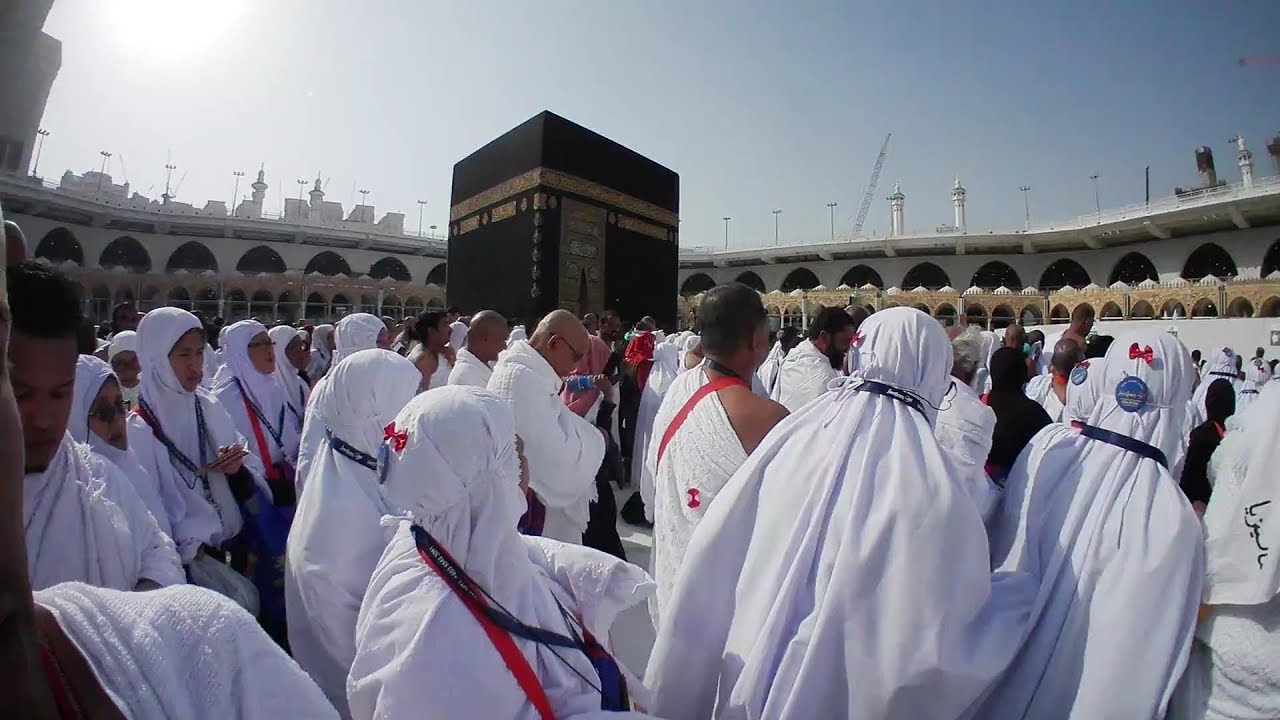
The final ritual of Hajj is Tawaf al-Wida, the farewell Tawaf. Pilgrims perform this final act of worship before departing from Mecca. It represents the pilgrim’s last expression of devotion to Allah before leaving the holy city.
Why Tawaf al-Wida is Important
Tawaf al-Wida is a gesture of gratitude to Allah for granting the pilgrim the opportunity to complete Hajj. It is a time for pilgrims to offer their final prayers and supplications, asking Allah for forgiveness, mercy, and blessings on their journey home.
This final Tawaf represents the completion of the pilgrimage, symbolizing the pilgrim’s renewed commitment to worship and their farewell to the sacred space of Mecca.
Conclusion
Hajj is a spiritual journey that involves deep reflection, worship, and connection with Allah. Each stage of the pilgrimage carries profound significance, offering pilgrims the opportunity to purify their hearts, seek forgiveness, and strengthen their relationship with Allah. Understanding the stages of Hajj helps pilgrims approach their pilgrimage with a sense of reverence and mindfulness, allowing them to fully embrace the spiritual benefits of the journey. Whether you are preparing for Hajj or simply wish to understand its importance, this guide provides a comprehensive overview of the sacred rituals that make up this transformative journey.





